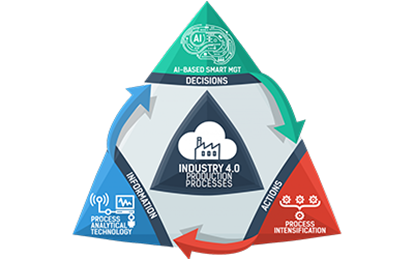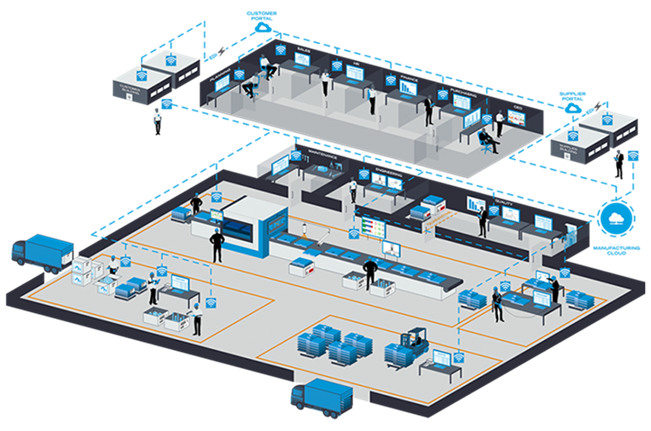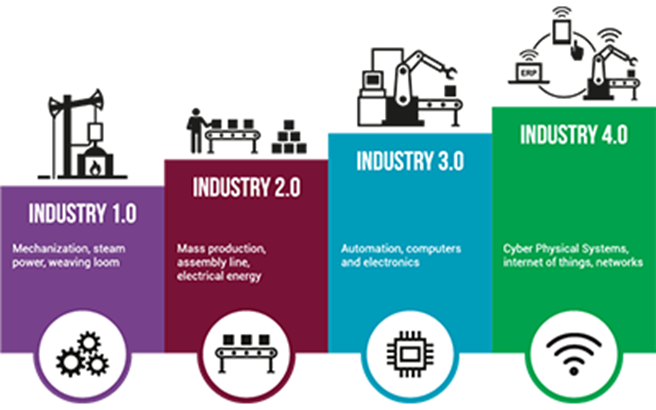Smart factories are revolutionizing manufacturing with interconnected, data-centric technologies. In the Industry 4.0 age, incorporating Internet of Things (IoT) sensors in production methods is changing factory operations. Emphasis is now on transitioning maintenance from reactive to predictive, facilitated by sophisticated sensing.

Image Credit: Superior Sensor Technology
Differential pressure sensors, as a central sensing tool, will increasingly contribute to collecting diagnostic data to enhance assets, reduce downtime, and devise more intelligent maintenance plans.
From monitoring air quality in HVAC systems to safeguarding equipment against failure in chemical plants, pressure sensors are becoming essential components for predictive maintenance.
Predictive maintenance involves the continuous monitoring of equipment to detect issues before a breakdown occurs. This approach is a considerable advancement from traditional reactive approaches that wait for failures to occur before fixing them.
By identifying problems early on, significant time and expenses can be saved, and pressure sensors are perfect for monitoring due to their ability to diagnose issues across pumps, valves, pipes, filters, and beyond.
This article presents an overview of how differential pressure sensors are employed in Industry 4.0 for predictive maintenance.

Figure 1. Sequence of the four industrial revolutions. Image Credit: Superior Sensor Technology
HVAC Systems
Ensuring ideal indoor air quality in contemporary factories is vital for both employee health and efficient production. Differential pressure sensors in Heating, Ventilation, and Air Conditioning (HVAC) systems oversee air quality, especially in specialized settings like cleanrooms. These sensors gauge the pressure disparity between two locations, allowing the system to identify any blockages in air filters.
If the pressure difference exceeds a set limit, an alert is issued, signaling a need for filter servicing or replacement. This preventive strategy not only fosters a healthier workspace but also averts expensive HVAC system failures.
Pneumatic Systems
Many manufacturing processes are reliant on pneumatic systems to power a range of tools and machines. These systems have integrated pressure sensors to monitor air pressure levels. In an Industry 4.0 environment, these sensors deliver real-time data regarding anomalies and fluctuations in pressure.
Predictive maintenance algorithms are used to analyze this data to recognize trends or patterns that may signal imminent equipment failure. For instance, a sudden decline in air pressure could indicate a leak in the system. Early detection enables maintenance teams to address these issues before they result in production downtime or expensive repairs.
Hydraulic Machinery
Hydraulic systems are often employed in manufacturing, particularly in heavy industries such as mining and construction. The pressure in hydraulic systems can be monitored by differential pressure sensors to ensure that the system is operating within efficient and safe parameters.
Industry 4.0 technologies allow these pressure levels to be continuously monitored, and predictive maintenance software can be used to analyze the data to predict when components, such as valves or pumps, are likely to fail. Proactively addressing these issues enables factories to reduce unplanned downtime and extend the lifespan of expensive hydraulic equipment.

Figure 2. Sketch of an Industry 4.0 factory. Image Credit: Superior Sensor Technology
Chemical Processing
Safety and precision are of utmost importance in chemical plants, and differential pressure sensors can be employed to monitor pressure differentials across pipelines, filters, and reactors. They serve a crucial function in the detection of leaks, blockages, or changes in pressure that could suggest a malfunction.
Anomalies in pressure data can initiate automatic shutdowns, while maintenance teams receive alerts in real-time. This prevents devastating accidents and improves the overall efficiency of chemical processes.
Compressed Air Systems
Compressed air systems are the pillar of many industrial operations, such as powering tools and operating conveyors. Differential pressure sensors are employed to monitor the condition of air filters as well as the overall integrity of the system.
Predictive maintenance software facilitates the processing of data from these sensors to identify when air leaks occur, when filters require replacing, or when the compressor may be operating less efficiently. Factories can improve the reliability of their compressed air systems and reduce energy costs by correcting these issues before they escalate.
Steam Boilers
Steam boilers are frequently employed in manufacturing processes for generating power and heat. Pressure sensors are essential to monitor and maintain the safe and efficient operation of such systems.
In an Industry 4.0 setting, pressure sensors are integrated with IoT abilities, facilitating the transmission of data to central control systems. Predictive maintenance algorithms are employed to analyze this data and predict when maintenance is necessary.
For instance, when a pressure sensor detects a gradual rise in pressure, it can imply scaling or buildup inside the boiler. Timely maintenance can extend the lifespan of the boiler and avoid costly shutdowns.
Water Treatment
Pressure sensors are vital for monitoring water treatment systems in industries where water is crucial, such as power generation or food and beverage manufacturing. Differential pressure sensors can be used to measure the pressure difference across membranes and filters. Any shift in pressure may signal filter clogs or membrane damage.
Therefore, the continuous collection and analysis of pressure data enables predictive maintenance systems to provide real-time alerts to issues, delivering consistent water quality and system reliability.
Injection Molding
Pressure sensors are commonly utilized in injection molding machines for the maintenance of precise control over the injection and clamping processes. In an Industry 4.0 setting, these sensors are integrated into the molding equipment and linked to central monitoring systems.
Predictive maintenance algorithms are used for the analysis of pressure data to predict wear and tear on components such as cylinders, nozzles, and seals. This facilitates proactive maintenance scheduling, which minimizes unplanned downtime and enhances the quality of molded products.

Figure 3. Pressure sensors are a critical part of Industry 4.0 evolution. Image Credit: Superior Sensor Technology
Conclusion
In the Industry 4.0 era, the integration of pressure sensors into manufacturing processes is transforming how factories approach maintenance. Facilities that adopt real-time data collection and analysis are more likely to minimize downtime, prevent costly breakdowns, and ensure production lines run safely, smoothly, and with maximum efficiency.
Prognostic pressure-based monitoring extends the lifetime of capital assets, optimizes operational efficiency, and eradicates catastrophic failures via early diagnosis.
As advancements in smart infrastructure and Industry 4.0 continue to be made, differential pressure sensors will expand as a vital technology for steering the predictive maintenance capabilities that define modern, resilient manufacturing.

This information has been sourced, reviewed and adapted from materials provided by Superior Sensor Technology.
For more information on this source, please visit Superior Sensor Technology.